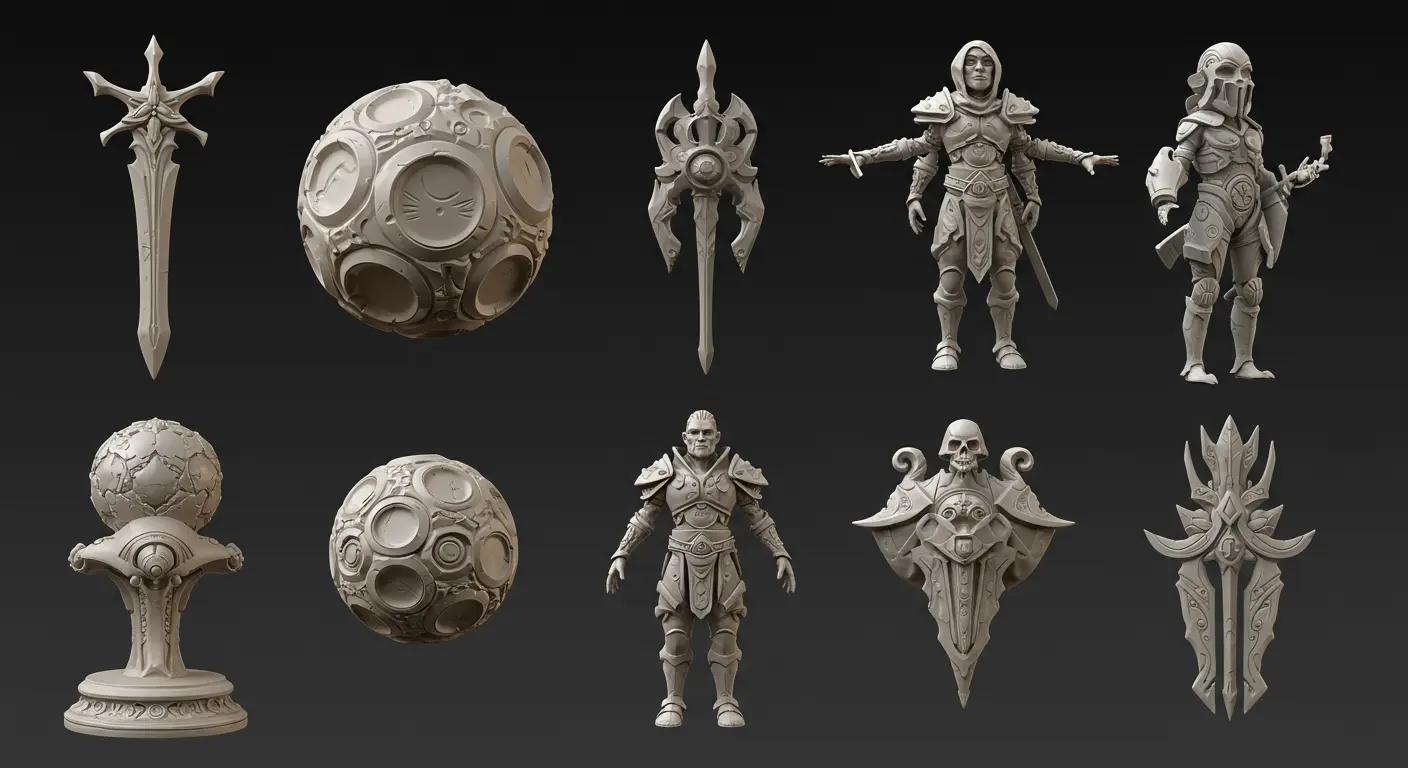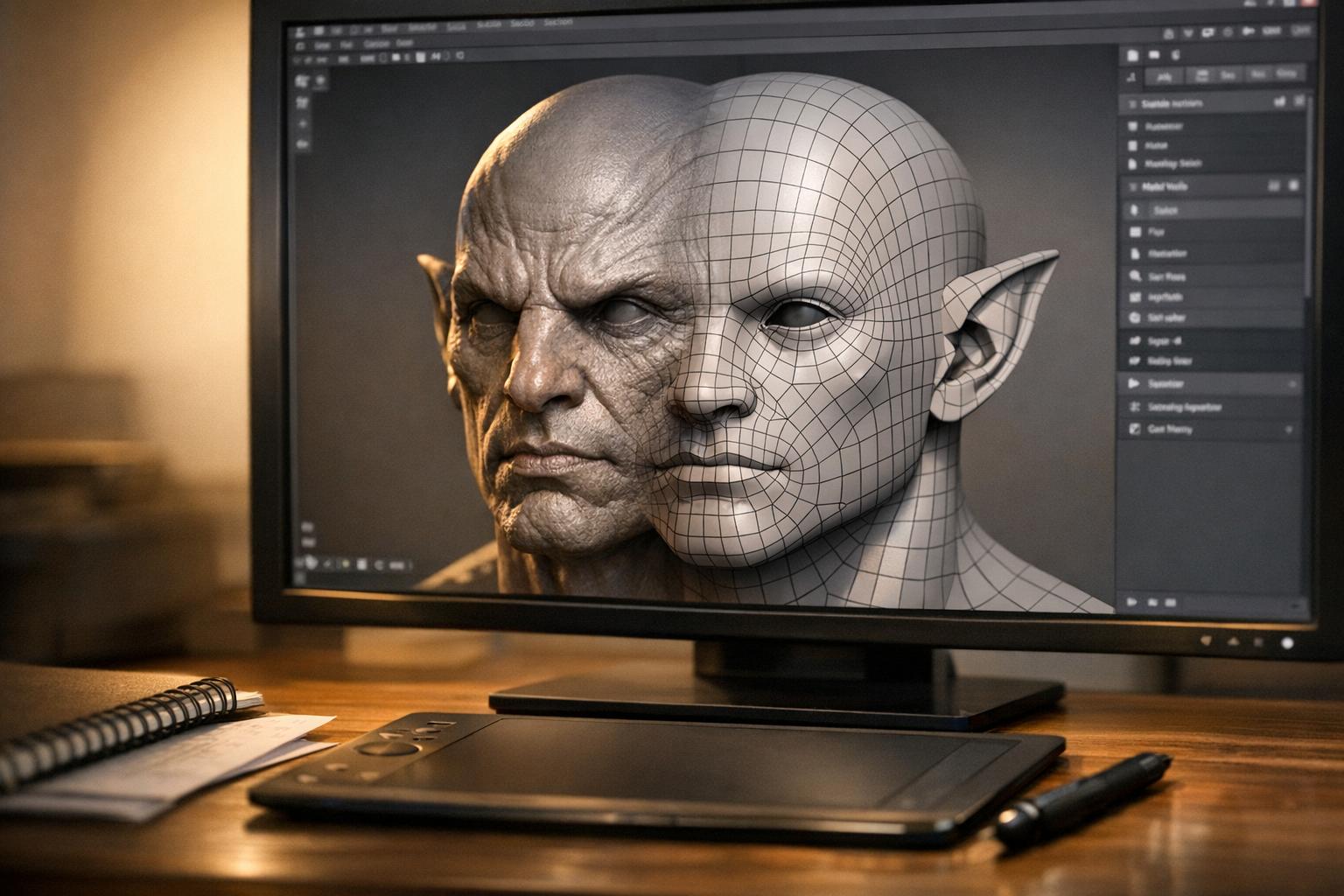Text to 3D technology feels like magic. You type a few words, and a three-dimensional object appears on your screen, ready to be used in your game, animation, or digital art. But sometimes, that magic can go a little sideways, leaving you with a lumpy, misshapen result that looks nothing like what you imagined.
Don’t worry, it’s not you—it’s the prompt! The key to unlocking consistent, high-quality results from AI generators is learning how to "speak their language." By avoiding a few common mistakes, you can go from frustrating blobs to fantastic models in no time.
1. Your Prompts Are Too Vague
This is the most common pitfall. Typing "sword" into a generator is a lottery. You might get a pirate's cutlass, a knight's broadsword, or a futuristic laser blade. The AI has no context for what you really want.
- The Fix: Be descriptive! Add adjectives that define style, material, and era.
- Instead of: sword
- Try: Ornate elven longsword with a glowing crystal pommel
- Instead of: chair
- Try: A low-poly, chunky wooden armchair for a cottage
2. You’re Making It Too Complicated
While detail is good, overwhelming the AI with contradictory or overly complex ideas in a single prompt can cause confusion. Asking for "a transparent steel car with feathered wings and stone wheels" forces the AI to mash together concepts that don't naturally coexist.
- The Fix: Focus on a core concept. Generate the main object first, and if you need complex add-ons, consider generating them as separate parts and combining them later in a tool like Blender. Start simple, then build complexity.
3. You Aren't Guiding the Style
If you don't specify an artistic style, the AI will likely default to its standard, which might be a semi-realistic but bland look. This can make your asset feel out of place in your project.
- The Fix: Add stylistic keywords directly into your prompt. This is one of the most powerful ways to control the final look.
- Cartoon style
- Low-poly
- Voxel art
- Photorealistic
- Claymation style
- Ghibli inspired
4. You Give Up After One Try
Getting the perfect model on the first attempt is rare. Many users type in a prompt, dislike the result, and assume the tool is broken.
- The Fix: Iterate! Think of it as a conversation. Your first result is the AI's first draft. Tweak a word, add a descriptor, or rephrase your idea and generate again. The best part? Platforms like Sloyd offer unlimited generations, so you can experiment freely without worrying about using up credits.
5. You Ask for a Scene Instead of an Object
Text-to-3D tools are currently optimized for generating single objects, not entire, complex scenes. A prompt like "a wizard in a library full of books" will likely result in a messy fusion of a person and a bookshelf.
- The Fix: Think in assets. Generate the "wizard," the "bookshelf," and the "potion bottle" as separate models. This gives you clean, individual assets that you can arrange perfectly in your game engine, like Unity or Unreal.
6. You Forget About Negative Prompting
Sometimes, what you don't want is just as important as what you do. If your model keeps generating with unwanted features (like a handle on a cup when you want a bowl), you need to steer it away from them.
- The Fix: Explicitly state what to exclude. While some tools have a dedicated "negative prompt" field, you can achieve the same effect by phrasing your prompt carefully.
- Instead of: a wooden bowl
- Try: a simple wooden bowl without handles or patterns
7. You Have Unrealistic Topology Expectations
AI-generated models, especially from early-generation tools, can have messy, uneven geometry (topology). This can make them difficult to animate or use in a game without significant cleanup.
- The Fix: Understand that text-to-3D is an incredible starting point. For complex uses, you may need to do some light retopology. However, tools are evolving fast. The models from Sloyd's Text to 3D generator are designed with usability in mind, often resulting in cleaner meshes that are easier to work with from the start.
8. Your Prompts Are Noun-Heavy
A prompt like "chest treasure gold" is just a list of nouns. The AI might not understand the relationship between them. Is it a chest made of gold? Or a chest filled with treasure?
- The Fix: Use connecting words and descriptive language to build a coherent sentence.
- Instead of: chest treasure gold
- Try: An open wooden treasure chest overflowing with gold coins
9. You Ignore Other Generation Methods
Text-to-3D is amazing, but it's not the only way to generate 3D assets with AI. Sometimes, a visual reference is more powerful than words.
- The Fix: If you have a clear reference image, try using an Image to 3D tool. Platforms like Sloyd offer a comprehensive suite, so you can switch between text prompts and image references seamlessly to find the best workflow for your needs.
10. You Aren't Using a Strong Call to Action
Just kidding! The final mistake is not putting these tips into practice.
The world of AI-powered 3D creation is evolving at a breakneck pace. By mastering the art of the prompt, you place yourself at the forefront of this revolution.
Ready to create something amazing? Head over to the Sloyd Text to 3D generator, try these tips, and see what you can bring to life.





